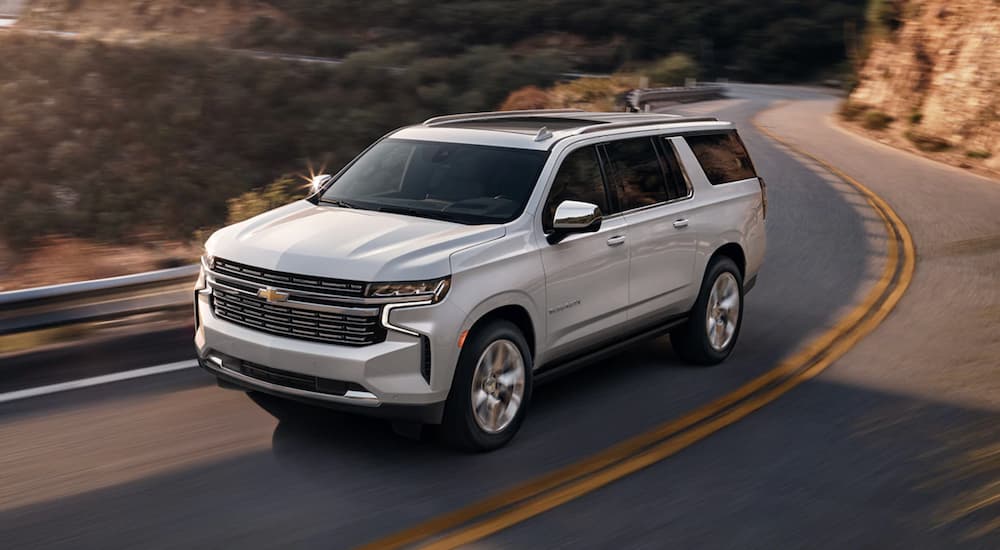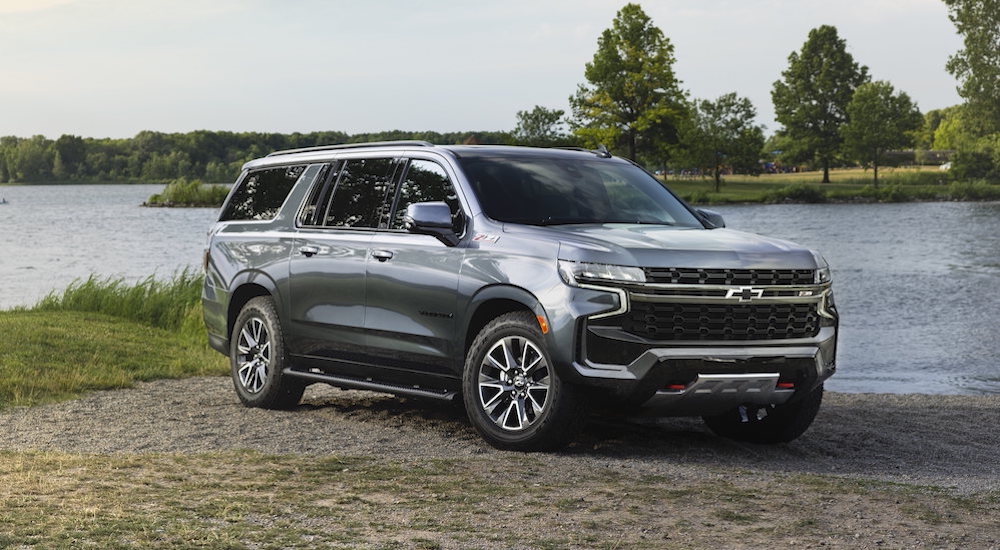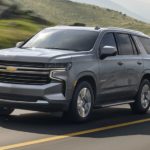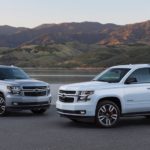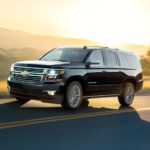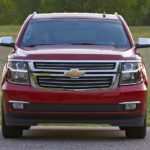There aren’t a whole lot of major changes being introduced for the 2023 Chevy Suburban, but the few changes that are being added are buffered by one major new addition for the model year on select trims: Super Cruise. This is GM’s ace-up-their-sleeve that has been rolled out across various top-level nameplates across Chevy, GMC, and Cadillac brands. Select 2021 model year vehicles eligible for utilizing Super Cruise will also be able to receive an over-the-air update, giving the company more breadth to capture a larger market share when it comes to hands-free, semi-autonomous driving. But for a vehicle like the Chevy Suburban, how much of a difference will it actually make? In order to find out, we need to take a deep dive into some of its adjacent features and what drivers expect from a vehicle like the Suburban.
What Is Super Cruise?
Before we get into the nitty gritty of how Super Cruise affects the Chevy Suburban, it’s probably important to first outline exactly what it is. The system is an evolved version of Adaptive Cruise Control, which originally came on to the scene way back in the early 1990s. Interestingly, not every vehicle out there actually makes use of Adaptive Cruise Control despite how long it’s been out, but standard Cruise Control is certainly a more standard inclusion among most vehicles today. Basically, it regulates your speed and, in the case of Adaptive Cruise Control, slows down or speeds up your vehicle depending on the traffic and terrain conditions.
Super Cruise evolves the concept of Adaptive Cruise Control by also making use of the embedded Chevy Safety Assist and the accompanying active and passive safety features, such as Lane Keep Assist with Lane Departure Warning, Automatic Emergency Braking, Front Pedestrian Detection, Lane Change Alert with Side Blind Zone Alert, and Rear Cross Traffic Alert to guide the vehicle across more than 200,000 compatible miles of road across North America. Whether in the United States or parts of Canada, the Super Cruise feature can dynamically navigate specific roadways in order to get a driver safely to their destination utilizing hands-free, autonomous driving mechanisms based on the aforementioned safety and sensor features.
Super Cruise will enable two of the six available 2023 Chevy Suburban trims to make use of the autonomous, hands-free driving mechanism. This is a significant upgrade from the Adaptive Cruise Control available for the full-size, family-oriented SUV. But how much use would something like Super Cruise get out of a vehicle like the Chevy Suburban? For that, we look at the current views some drivers have on existing semi-autonomous features, like Adaptive Cruise Control.
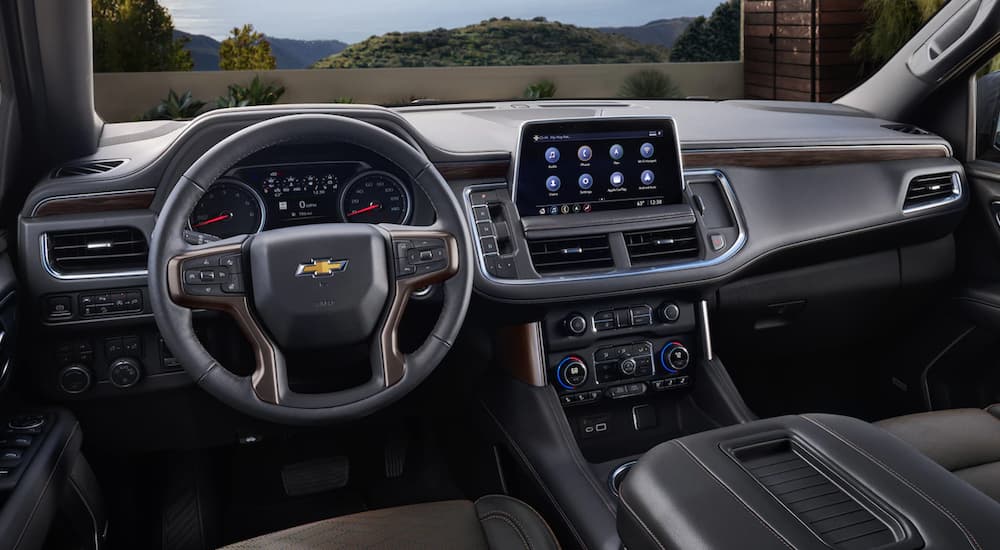
Drivers Really Like Adaptive Cruise Control
A research study conducted by Niklas Strand, Marianne Karlsson, and Lena Nilsson revealed that a sizable portion of drivers who participated in the study actually really do enjoy Adaptive Cruise Control. Most found it operationally reliable, convenient, and easy to use, as well as being relatively safe. Of course, Adaptive Cruise Control isn’t quite the same thing as Super Cruise. You’re still very much in control of the vehicle with Adaptive Cruise Control.
Adaptive Cruise Control has also found itself in more vehicles outside just the luxury-oriented models, and you can actually get the feature in a lot of basic economy models on the road right now. While nearly half of the participants in the survey found that Adaptive Cruise Control enables positive integration into traffic and speed flow, what happens when you take the driver’s hands out of the equation? Are people still as confident about semi or nearly fully autonomous driving mechanisms? Well, that’s an interesting question.
There have been reports that nearly 30% of survey respondents would be fully okay with an entirely autonomous driving vehicle. More specifically, nearly 40% of those under 30 were okay with autonomous vehicles, while barely 18% of those over 60 were okay with it. It basically shows that people are fine with incremental tech upgrades for their vehicles but aren’t quite ready for every aspect to strip away full control from the driver. But the highlight of Super Cruise is that it’s not fully autonomous, just hands-free.
Super Cruise’s On-Road Convenience for Busy Families
The market data shows that most people buying a Chevy Suburban are in their 40s with a family and affluent enough to afford a fully equipped vehicle like the Suburban. In many ways, it makes complete and total sense why Super Cruise would be a highly desirable feature and function for those eyeing a 2023 Chevy Suburban. Most people who buy a Suburban Premier or High Country are already expecting features like Adaptive Cruise Control to be standard.
In fact, the feature has been standard on the higher-end trims for years, so having an evolved version of Adaptive Cruise Control in the form of Super Cruise just makes sense. It’s also interesting because the biggest apprehension that many older drivers have about autonomous driving is having the control taken away from them, but with Super Cruise, the control is still readily available to the driver, only they have a hands-free experience to employ at their leisure. It’s that perfect middle ground between the driver still having control and the automated system relieving the driver of stress-inducing responsibilities while on the road.
Thanks to making use of many existing safety, stability, and traction control systems already available in vehicles like the Suburban, the leap from what’s currently available in the form of Adaptive Cruise Control to Super Cruise doesn’t seem so jarring. It’s leveraging many systems that are already making driving easier but now removing the extra hurdle of having the driver actively participate in expending energy and focus on all the ins and outs of lane changes, speed maintenance, and following distance. All of these are now being handled by the computer, allowing drivers to relax for the most part until their attention or focus is required.
Adoption Rates for the Future
The most interesting thing about GM’s strategy of including Super Cruise in select vehicles is that this feature––if properly advertised and adopted by target demographics––could help move big numbers for specific trims within the vehicle’s segment. For the Chevy Suburban, it will be very interesting to see how a feature like Super Cruise will help alter the adoption rates among the core demographic and if it will help push sales where they may have been lacking.
This could also open the door and pave the way for more advanced autonomous driving mechanisms, especially if Super Cruise becomes as appreciated and utilized on the road by drivers as features like Adaptive Cruise Control. For the Suburban, it makes even more sense because some of the big selling points for the full-size SUV are its interior comfort amenities, the safety features, and its towing capabilities. While Super Cruise won’t have much impact on the towing side of things (although it is designed for it), the biggest effect it will have is on the daily or even weekend commutes, where long travel times are made more digestible thanks to the vehicle itself offloading some of the stress from the driver thanks to the hands-free driving system.
Barring any supply chain issues or tech disruptions, we could be looking at a very impressive future for the Chevy Suburban with the inclusion of Super Cruise. But it all starts with how well full-size SUV shoppers take to the 2023 Chevy Suburban and whether the inclusion of Super Cruise is something that will alter the way they see autonomous driving becoming a more prominent and reliable feature in both luxury and family-oriented vehicle segments. We’ll certainly find out how well Super Cruise will change the face of the landscape once the sales numbers are in for the 2023 Suburban.
